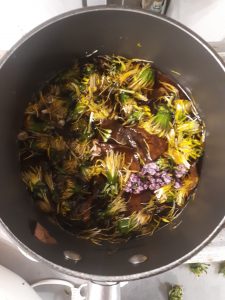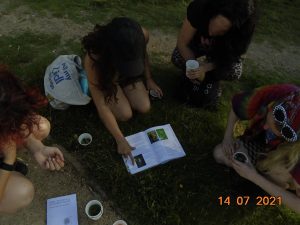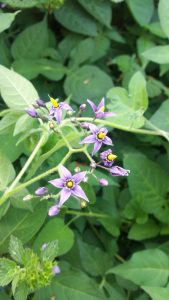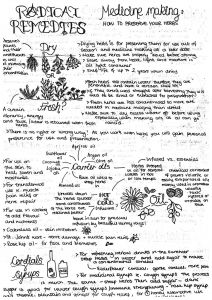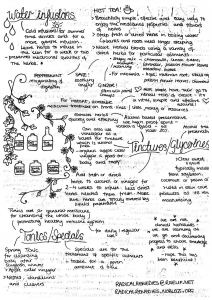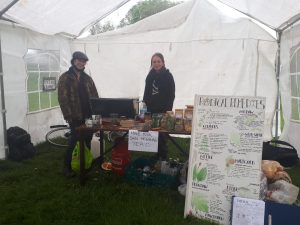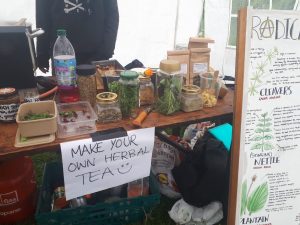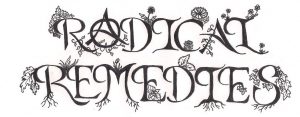

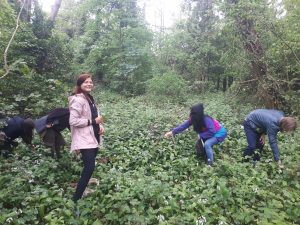
We went for a walk in Sydenham Woods with some loved ones and new faces to investigate natures bounty and to find some Spring treasures! We chose a few plants to focus on that are great to use in cooking and tonics at this time of year.
Nettles (Urtica Dioica)
Harvest young top leaves in the Spring (before they turn to seed as this signifies a change in nutrition content food for moths and butterflies but not for humans), find in hedgerows, woodlands and disturbed land. All parts of the plant can be used- leaves in soups, pesto and pasta (spinach substitute) the seeds can be used for mood and energy boosting.
- Nutrient rich
- Rich in vitamins C, A, K and B, minerals, iron, magnesium, calcium, zinc, potassium, phosphorus (good for anemia, vegan/vegetarian diets)
- Supports the immune system
- Flushes out lymphatic system
- Diuretic- facilitates expulsion of toxins, supports kidneys
- Natural histamines relieve hay fever symptoms (start taking early on in the Spring for effect throughout summer sniffles)
- Toning astringent action
- Supports healthy digestive function and respiratory system
Wild Garlic/Ramsons (Allium Ursinum)
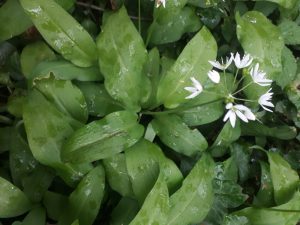
Found in woodland early to late Spring, waxy long pointed leaves with white flowers and a powerful garlic aroma fills the air in grows in. Harvest the whole thing, young leaves are more tender for a fresh salad, delicious in pesto and soups.
- Part of the allium family wild garlic is anti-bacterial for human and soil alike
- Anti-biotic
- Anti-viral
- Contains vitamins A and C, calcium, iron, phosphorus, sodium and copper
- Helps relieve symptoms of cold and flu, respiratory problems
- Relief from cramps
- For heart health and reducing blood pressure
- Flushes toxins, improves skin conditions
Cleavers (Galium Aparine)
Best in early Spring when leaves are tender. Found in woodlands, verges, hedgerows, very common treasure. It can be used in a soothing salve with dandelion and daisies and as a pollucite for rashes, burns and bites. Can be made into a tonic with vinegar, chopped up in salads, soups and pesto (small sticky hairs are a bit scratchy!)
- High in vitamin C
- Cleansing- it is a diuretic, flushing toxins from the body by stimulating the lymphatic system and urinary tract, supporting kidney and liver health
- Anti-inflammatory, cooling and moisturising for the skin (can be made into a pollucite for external application to skin ailments)
Plantain (Plantago Major/Lanceolata)
Harvest all year round, very common to find in grass and bare soil. It can be used fresh in pollucite/salve for skin conditions and in a tea dried for coughs. It can also be eaten in salads and used in tonics.
- Contains vitamins A, C, calcium, magnesium and zinc
- Seeds rich in proteins and omega 3 fatty acids
- Leaves are anti-bacterial, anti-septic, moisturising, soothing and wound healing
- Astringent- draws out infection for cuts/scrapes
- Good to sooth bites, burns and stings
- Reduces inflammation
- Diuretic- helps with UTIs
- Great for coughs, bronchitus, cold/flu, sore throat
Dandelion (Taraxacum Officinale)
The underrated common “weed”, the spring time burst of sunshine, early pollinator, the magical Dandelion. Growing in the most unexpected of urban sprawls, Dandelions love disturbed soil; pushing through cracks in pavements, brightening up lawns and lining their golden faces a long rode sides.
Historically and globally renowned, the Dandelion has been hailed for centuries by herbalists for its medicinal benefits for all manner of aliments. Now, it is known that this is due to its nutrient density; Dandelions contain more vitamin A than spinach, more vitamin C than tomatoes and tons of iron, calcium and potassium.
Their long tap roots (which can grow up to 15ft deep) pull nutrients up from deep in the soil to be available to other plants, great for soil structure and breaking up tough soil, for aeration and help stop soil erosion. Leaves can be cooked as any other green but the young leaves are a lovely addition to a salad. Flowers can be used to make vegan honey and the roots have been used for centuries to make soft drinks and beers. All parts make a powerful diuretic tonic.
- Leaves high in vitamins A, B, C & D
- Minerals potassium, iron and phosphorus
- Helps relieve pre-mensural symptoms, relieving water retention and release pelvic congestion
- As a diuretic strengthens the urinary system, supports the liver and the digestive system- good for UTIs
- Anti-inflammatory – polyphenols in the leaves fight inflammation in the body
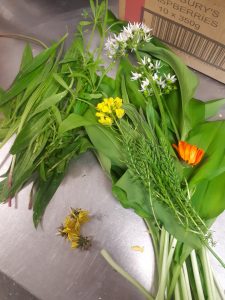
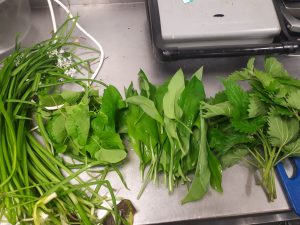
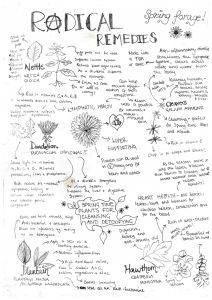
Spring Tonic
For a powerful, medicinal tonic to flush the system out after a long cosy winter of hibernation and stodge add nettles, dandelions and cleavers to organic apple cider vinegar. Leave to infuse in air tight container out of direct sunlight for 2- 4 weeks. This is great to flush out lymphatic system, support the immune system and help aid digestion.
Almighty Spring pesto!
Packed full of goodness and flavor, this pesto was made up of nettles, wild garlic, garlic mustard, three cornered leek (Italian wild pesto) with plenty of olive oil, lemon juice and pine nuts, blitzed up then seasoned with salt and pepper.
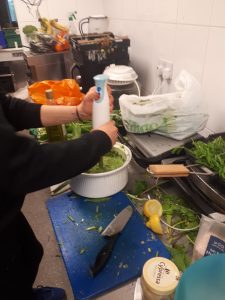
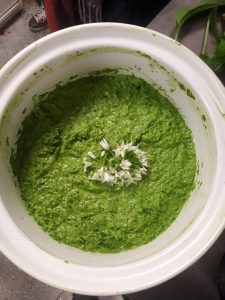
Nettle soup
Another way to use the foraged greens is in a hearty Spring soup. We fried up onions, garlic and herbs/spices of choice. Added in nettles, garlic mustard and a little wild garlic, added stock and brought to simmer, then added lentils and potatoes and left to cook. Season with salt and pepper!
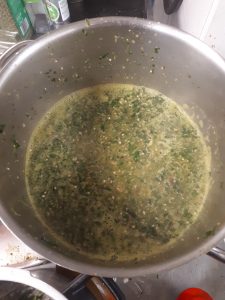
Vegan honey
Steep dandelions, fallen magnolia petals, ginger and cherry blossom in water to make a tea for around 30 mins. Add dark brown sugar (I like muscovado) depending on how thick you want the syrup you can add more sugar, cook for around an hour stirring as you go and keep an eye on the thickness for personal taste. The nectar and pollen give a honey like flavor- you are like the little human bee collecting your sweet nectar for a medicinal and yummy syrup. You can make a more medicinal syrup by adding more ginger and plantain a long with thyme.
